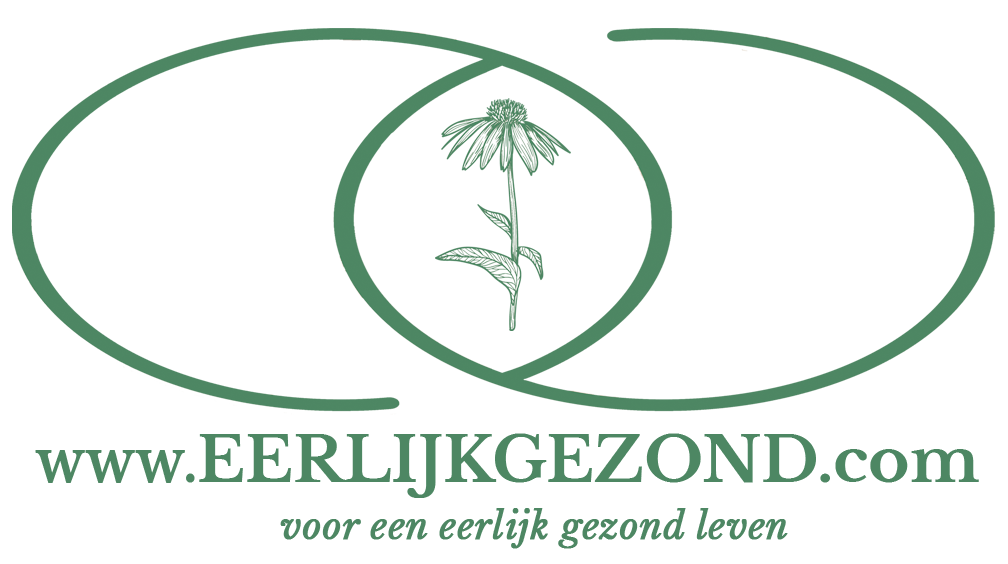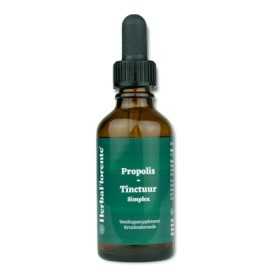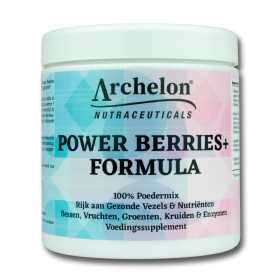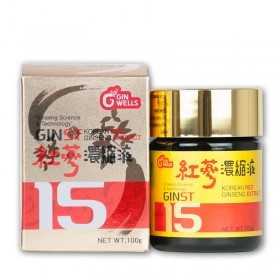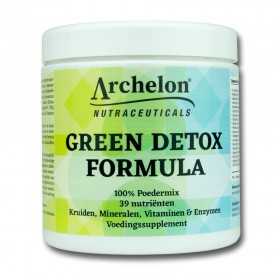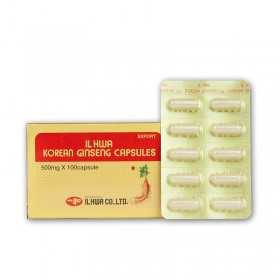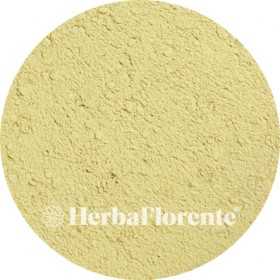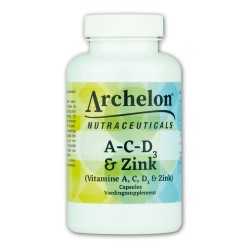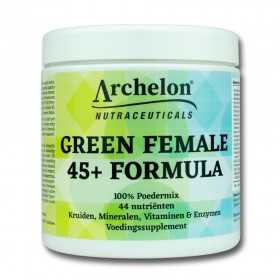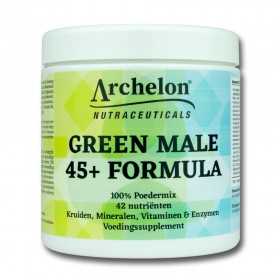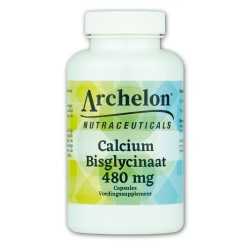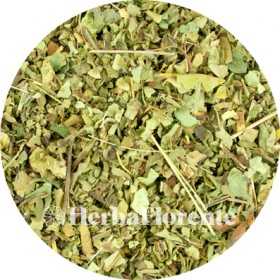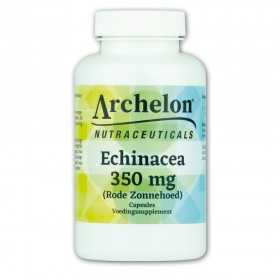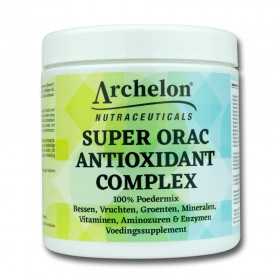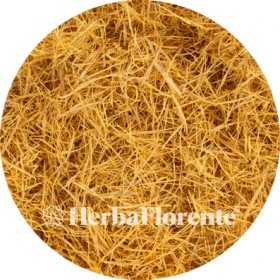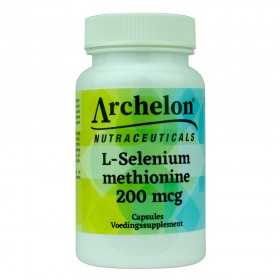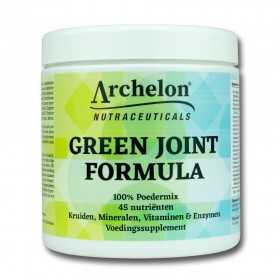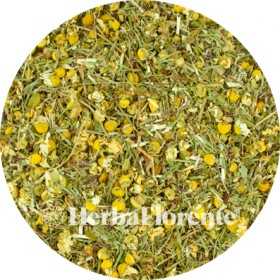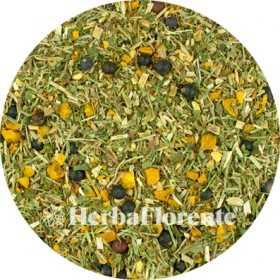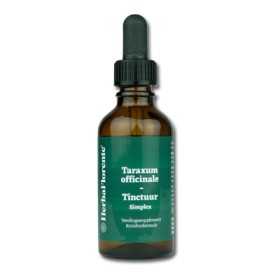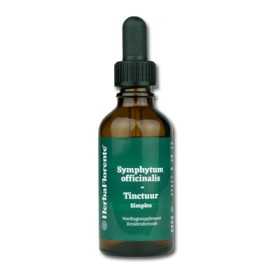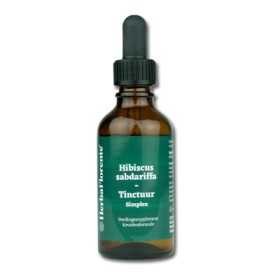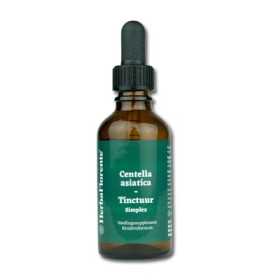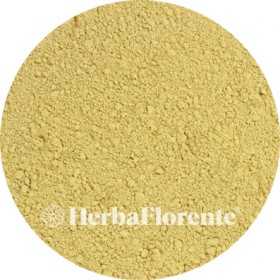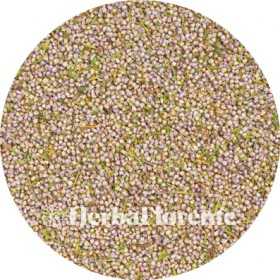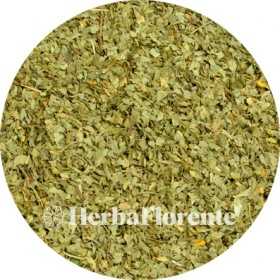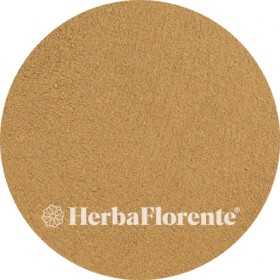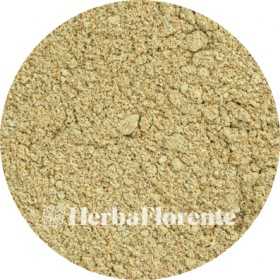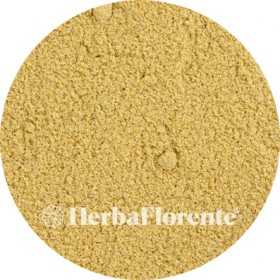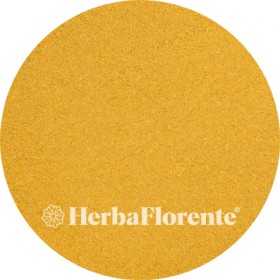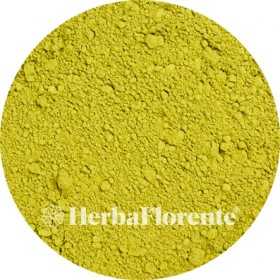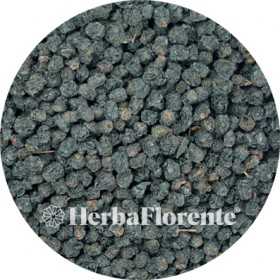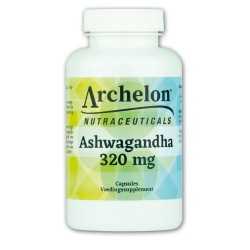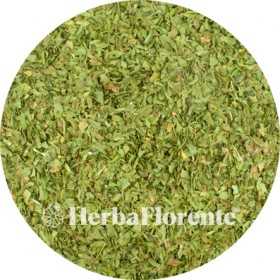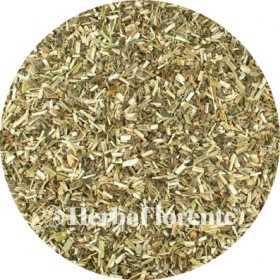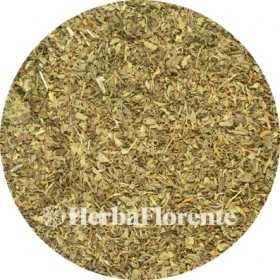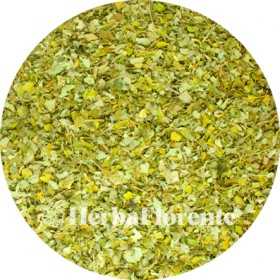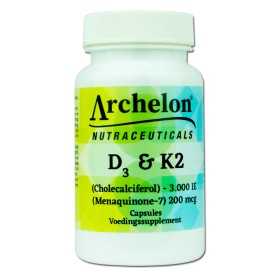Best sellers
There are 366 products.
L-Selenium methionine - 200 mcg
Selenium is an essential mineral that plays a role in various processes in our body. It is bound to methionine, an essential sulfur amino acid. This powerful mineral supports the thyroid, promotes fertility in men and contributes to healthy hair and nails. As an antioxidant, it protects our immune system and helps protect healthy tissues and cells in our body against oxidative damage.
We can get selenium from food, both plant and animal sources. The amount of selenium in plant foods can vary depending on the amount of selenium in the soil in which the plants grow. In order not to be dependent on varying factors, it can be useful to take a selenium supplement.
We can get selenium from food, both plant and animal sources. The amount of selenium in plant foods can vary depending on the amount of selenium in the soil in which the plants grow. In order not to be dependent on varying factors, it can be useful to take a selenium supplement.
€17.95
Green Joint Formula
Green Joint Formula is an advanced supplement specifically designed to help promote flexible joints and support an active lifestyle. Using a therapeutic formula packed with 45 essential nutrients, this supplement is a powerful ally for people looking to improve their mobility and care for their joints.
One of the key ingredients of Green Joint Formula is the patented collagen, Peptan®. This high-quality collagen peptide is clinically proven to be effective in supporting healthy joints and promoting flexibility. Adding collagen peptides to the formula strengthens the structure of cartilage and improves overall joint health.
One of the key ingredients of Green Joint Formula is the patented collagen, Peptan®. This high-quality collagen peptide is clinically proven to be effective in supporting healthy joints and promoting flexibility. Adding collagen peptides to the formula strengthens the structure of cartilage and improves overall joint health.
€72.50
Bladder Herbal Tea
Herbal tea composed of various herbs
Bladder support
Bladder support
€3.95
Joints Herbal Tea
Herbal tea composed of various herbs
Support for the joints
Support for the joints
€3.95
Dandelion Tincture - Taraxum officinale Tincture
Single herbal tincture made with dried herb & root of Taraxum officinale (Dandelion).
Dandelion (Taraxacum officinale) has been known for centuries for its ability to support liver and gallbladder function. Both the root and the above-ground parts of the plant are rich in nutrients. In addition, dandelion has a beneficial effect on digestion.
The rich nutritional value of dandelions makes it advisable to regularly pick some fresh leaves in the wild and add them to salads. They are especially tasty in the spring. The fresh yellow flowers can be used as a cheerful decoration in salads and dried they can be processed into a 'wild' herbal tea.
Dandelion (Taraxacum officinale) has been known for centuries for its ability to support liver and gallbladder function. Both the root and the above-ground parts of the plant are rich in nutrients. In addition, dandelion has a beneficial effect on digestion.
The rich nutritional value of dandelions makes it advisable to regularly pick some fresh leaves in the wild and add them to salads. They are especially tasty in the spring. The fresh yellow flowers can be used as a cheerful decoration in salads and dried they can be processed into a 'wild' herbal tea.
€9.95
Comfrey Tincture - Symphytum officinalis Tincture
Single herbal tincture made with dried root of Symphytum officinalis (Comfrey).
The common comfrey (Symphytum officinale) is common in the Netherlands and Belgium. Comfrey belongs to the rough-leaved family (Boraginaceae). It is a genus of plants consisting mainly of perennial herbs, not shrubs or trees. The calyx of the flower is cut by a quarter or completely, while the leaves are elongated to lanceolate and scattered.
Comfrey is traditionally used for ointments, wraps and compresses that help with broken bones, sprains and bruises.
The common comfrey (Symphytum officinale) is common in the Netherlands and Belgium. Comfrey belongs to the rough-leaved family (Boraginaceae). It is a genus of plants consisting mainly of perennial herbs, not shrubs or trees. The calyx of the flower is cut by a quarter or completely, while the leaves are elongated to lanceolate and scattered.
Comfrey is traditionally used for ointments, wraps and compresses that help with broken bones, sprains and bruises.
€12.95
Hibiscus Tincture - Hibiscus sabdariffa Tincture
Single herbal tincture made with dried flower of Hibiscus sabdariffa (Hibiscus).
The Hibiscus (Hibiscus sabdariffa) is traditionally used in hot and cold drinks, as a flavoring and coloring agent in the food industry, and as a herbal remedy for its ability to reduce fatigue and promote cardiovascular health.
The Hibiscus (Hibiscus sabdariffa) is traditionally used in hot and cold drinks, as a flavoring and coloring agent in the food industry, and as a herbal remedy for its ability to reduce fatigue and promote cardiovascular health.
€9.95
Asiatic Pennywort Tincture - Centella asiatica (Hydrocotyles) Tincture
Single herbal tincture made with dried herb of Centella asiatica (Hydrocotyles) (Asiatic Pennywort) (Gotu kola).
Asian pennywort also known as Gotu kola(Centella asiatica), is a plant that thrives in Southeast Asia and plays a central role in Ayurvedic medicine. Due to its diverse active substances, Asian pennywort is widely used in herbal medicine. It is known for supporting cognitive functions such as memory, concentration and learning, and it is also used to promote healthy blood circulation and vascular function.
Asian pennywort also known as Gotu kola(Centella asiatica), is a plant that thrives in Southeast Asia and plays a central role in Ayurvedic medicine. Due to its diverse active substances, Asian pennywort is widely used in herbal medicine. It is known for supporting cognitive functions such as memory, concentration and learning, and it is also used to promote healthy blood circulation and vascular function.
€9.95
Licorice - Glycyrrhiza glabra, Liquiritiae
Licorice (Glycyrrhiza glabra) is a versatile herb that plays an important role in Ayurvedic medicine. It is known for its beneficial effects on digestion and maintaining flexible joints, while also soothing the respiratory tract.
This plant is grown in various parts of the world, including Europe, Asia and the Middle East. It is a hardy plant that even thrives in the Netherlands. However, it takes three to four years before the roots can be harvested.
In addition to the roots, the leaves can also be used, for example to make tea. Licorice is widely used in foods and pharmaceuticals because of its sweet taste and other ingredients.
This plant is grown in various parts of the world, including Europe, Asia and the Middle East. It is a hardy plant that even thrives in the Netherlands. However, it takes three to four years before the roots can be harvested.
In addition to the roots, the leaves can also be used, for example to make tea. Licorice is widely used in foods and pharmaceuticals because of its sweet taste and other ingredients.
€2.00
From: €2.00
Shrub Heather (Flower) - Erica vulgaris
The Heather (Erica vulgaris - Calluna vulgaris) belongs to the heath family (Ericaceae) and grows throughout Europe, especially in Central and Northern Europe. It even reaches Western Siberia in the east. In the nineteenth century, Scottish immigrants brought the heather to Canada, from where it spread throughout North America. It is the only species in the genus Calluna, meaning it is a monotypic genus.
The shrub heath can grow to a height of 10-100 cm, sometimes even up to 150 cm in certain places. It has hermaphroditic, symmetrical flowers, with the calyx and petals being the same color. Purple flowers appear towards the end of the branches, creating the purple heaths from late July to early September.
The shrub heath can grow to a height of 10-100 cm, sometimes even up to 150 cm in certain places. It has hermaphroditic, symmetrical flowers, with the calyx and petals being the same color. Purple flowers appear towards the end of the branches, creating the purple heaths from late July to early September.
€2.80
From: €2.80
Parsley - Petroselini - Cut
Parsley (Petroselinum crispum) is a biennial, winter-hardy herbaceous plant belonging to the lacecap family (Apiaceae). It is used extensively in European, American and Middle Eastern cuisine for its fresh taste.
To the ancient Greeks, parsley symbolized joy and was used together with marjoram as a hangover remedy. The Romans spread the use of this herb throughout Western Europe. In the Middle Ages, parsley served as a vegetable and was grown, among other things, in the imperial gardens of Charlemagne.
Adding parsley (usually the leaves) to dishes is best done just before serving. It is often combined with garlic in butter to make herb butter and can also be used in salads. Ground parsley seeds serve as a spice.
To the ancient Greeks, parsley symbolized joy and was used together with marjoram as a hangover remedy. The Romans spread the use of this herb throughout Western Europe. In the Middle Ages, parsley served as a vegetable and was grown, among other things, in the imperial gardens of Charlemagne.
Adding parsley (usually the leaves) to dishes is best done just before serving. It is often combined with garlic in butter to make herb butter and can also be used in salads. Ground parsley seeds serve as a spice.
€2.20
From: €2.20
Pau D'arco - Tabeuiae
Pau d'arco (Tabebuia avellanedae) is an imposing tree that thrives in the Amazon rainforest. The bark of the pau d'arco has been used for centuries in traditional herbal medicine for its diverse uses, including its supportive effects on the immune system.
The inner layer of the bark of Tabebuia avellanedae is packed with flavonoids, powerful antioxidants that protect our bodies against oxidative damage caused by free radicals. In addition, it contains a significant amount of quinones. More than 20 quinone compounds have already been discovered in the bark of the pau d'arco, such as lapachol and beta-lapachone. In addition, the bark contains substances that help defend against unfavorable bacteria and fungi.
The inner layer of the bark of Tabebuia avellanedae is packed with flavonoids, powerful antioxidants that protect our bodies against oxidative damage caused by free radicals. In addition, it contains a significant amount of quinones. More than 20 quinone compounds have already been discovered in the bark of the pau d'arco, such as lapachol and beta-lapachone. In addition, the bark contains substances that help defend against unfavorable bacteria and fungi.
€2.60
From: €2.60
Milk Thistle (Seed) - Sylibum marianum, Cardui Mariae
Milk thistle (Silybum marianum), also known as milk thistle or milk thistle, is a spiny plant native to the Mediterranean region, but which also grows in our area. It belongs to the composite family. Milk thistle has been used for centuries as a natural remedy to support liver and bile function. It can be used as part of a cleansing regimen to assist the liver in the detoxification process.
The seeds of milk thistle contain silymarin, a powerful antioxidant. Silymarin stimulates the liver in the natural detoxification process and thus supports liver function.
The seeds of milk thistle contain silymarin, a powerful antioxidant. Silymarin stimulates the liver in the natural detoxification process and thus supports liver function.
€2.00
From: €2.00
Coriander - Coriandrum sativum
Coriander seeds have been used for thousands of years to support digestion and intestinal health, and this tradition continues to this day. People who want to strengthen their immune system prefer coriander seeds. In addition, coriander seed has a beneficial effect on the heart and nervous system.
Coriander is an herb rich in valuable substances. Both the leaves and seeds contain vitamins A, C, K and folic acid, as well as minerals such as iron, manganese, potassium, magnesium and calcium. The seeds are especially rich in essential oils such as linalool, camphor, gamma terpinene and geranyl acetate. The seeds are the main source of nutrients.
Coriander is an herb rich in valuable substances. Both the leaves and seeds contain vitamins A, C, K and folic acid, as well as minerals such as iron, manganese, potassium, magnesium and calcium. The seeds are especially rich in essential oils such as linalool, camphor, gamma terpinene and geranyl acetate. The seeds are the main source of nutrients.
€2.00
From: €2.00
Cat's Claw - Uncaria tomentosa
Cat's claw (Uncaria tomentosa) is a climbing plant that is native to the Amazon region of Brazil and Peru. It is highly valued in the Peruvian Amazon and is among the protected species. This plant is often called the 'sacred herb of the rainforest' because of its significance. The name 'cat's claw' or 'cat's claw' is derived from the small claw-like thorns at the base of the leaves, which resemble a cat's claws. These claws help the vine to wrap itself around trees and climb up to a hundred meters high!
€2.60
From: €2.60
Echinacea (Coneflower) - Echinaceae purp.
Purple coneflower (Echinacea purpurea) is one of the most widely grown and used herbs in the world because of its positive influence on the immune system. The genus name 'echinacea' is derived from the Greek word 'echinos', meaning 'hedgehog', because of the spiky flower cone. Since the beginning of the last century, much research has been done into Echinacea purpurea in Europe.
This plant has a rich history and originally comes from North America. Indigenous tribes used this perennial plant for its beneficial effects on the immune system. Colonist doctor H.C.F. Meyer adopted this knowledge from the indigenous population and brought the first product based on echinacea onto the market in 1871.
This plant has a rich history and originally comes from North America. Indigenous tribes used this perennial plant for its beneficial effects on the immune system. Colonist doctor H.C.F. Meyer adopted this knowledge from the indigenous population and brought the first product based on echinacea onto the market in 1871.
€4.00
From: €4.00
Damiana - Damianae mex. (Turnera diffusa) - Grounded
Damiana (Turnera diffusa) is a shrub native to southern Texas in the United States, as well as Central America, Mexico, South America and the Caribbean. It belongs to the Passifloraceae family and has been used by the Mayan Indians for centuries for its known effects on libido. Both men and women benefit from the libido-supporting properties of damiana, which is also known for its stress-reducing effect.
In Mexico, women often prepare tea from the fragrant leaves of the damiana shrub or smoke them to stimulate their feelings of pleasure. Damiana leaf contains several active substances, including beta-sitosterol, arbutin and alkaloids.
In Mexico, women often prepare tea from the fragrant leaves of the damiana shrub or smoke them to stimulate their feelings of pleasure. Damiana leaf contains several active substances, including beta-sitosterol, arbutin and alkaloids.
€4.40
From: €4.40
Aronia berry - Arnoia melanocarpa - Whole
Aronia berries, also called black chokeberries (Aronia melanocarpa), grow on compact bushes of about 1 to 3 meters high. The berries have a deep purple to black color.
Aronia berries are particularly rich in anthocyanins, the flavonoids that give the berries their characteristic color. Flavonoids are plant substances that protect the plant against ultraviolet light, oxidation and heat. Compared to blueberries, aronia berries contain four times more anthocyanins.
The black fruits contain different types of anthocyanins. The natural function of these anthocyanins and other polyphenols is to protect the seed of the aronia berry against harmful external influences. Anthocyanins act as natural antioxidants.
Aronia berries are particularly rich in anthocyanins, the flavonoids that give the berries their characteristic color. Flavonoids are plant substances that protect the plant against ultraviolet light, oxidation and heat. Compared to blueberries, aronia berries contain four times more anthocyanins.
The black fruits contain different types of anthocyanins. The natural function of these anthocyanins and other polyphenols is to protect the seed of the aronia berry against harmful external influences. Anthocyanins act as natural antioxidants.
€2.00
From: €2.00
Ashwagandha - 320 mg
In Ayurvedic medicine, ashwagandha is known as a 'rasayana', meaning it is used to support both physical and mental health. It has a calming effect and is used to sleep better and promote a balanced mind. In India, where this herb originates, it is believed to support male potency and female health, often compared to the strength and vitality of a horse.
€17.95
Lovage - Levisticum officinale
Lovage, also known as the maggi plant, is a perennial plant from the umbellifer family (Apiaceae). The name "maggi plant" refers to the strong smell, which is reminiscent of the maggi aroma. However, the herb is not an ingredient in the original Maggi recipe.
Originally from Southeast Asia and Iran, the Romans spread lovage throughout Europe during their conquests. Today, the plant grows in large parts of Europe and North America and occasionally occurs in northern Thailand.
Originally from Southeast Asia and Iran, the Romans spread lovage throughout Europe during their conquests. Today, the plant grows in large parts of Europe and North America and occasionally occurs in northern Thailand.
€3.50
From: €3.50
Betony - Wood Betony - Betonica officinalis
Betony (Betonica officinalis, synonym: Stachys officinalis) is a herbaceous plant from the Lamiaceae family. In the Netherlands and Belgium, the species is on the Red List of plants, where it is classified as very rare and has declined sharply in numbers. In addition to its natural occurrence, betony is also often cultivated as an ornamental plant.
The plant reaches a height of 30–90 cm and blooms from June to August with purple-red flowers, although white varieties sometimes occur. The flowers are in dense, spike-shaped false inflorescences. Most leaves form a basal rosette: the lower leaves have long petioles, while the upper leaves have short petioles. All leaves have a reticulate venation. The stem is unbranched, square in shape and covered with short hairs.
The plant reaches a height of 30–90 cm and blooms from June to August with purple-red flowers, although white varieties sometimes occur. The flowers are in dense, spike-shaped false inflorescences. Most leaves form a basal rosette: the lower leaves have long petioles, while the upper leaves have short petioles. All leaves have a reticulate venation. The stem is unbranched, square in shape and covered with short hairs.
€3.20
From: €3.20
Spearmint - Mentha spicata
Spearmint, also known as green mint (Mentha spicata), is an aromatic perennial plant from the Lamiaceae family. This plant originally comes from Central and Southern Europe, where it regularly establishes itself as a feral plant. Peppermint (Mentha ×piperata), a commonly used variety in food and care products, originated from a cross between spearmint and water mint (Mentha aquatica).
The leaves of spearmint contain a wealth of essential oils, with carvone being the most important. This component is also found in caraway, which gives the mint its characteristic scent. However, the leaves contain little menthol, which makes the taste milder than that of peppermint.
The leaves of spearmint contain a wealth of essential oils, with carvone being the most important. This component is also found in caraway, which gives the mint its characteristic scent. However, the leaves contain little menthol, which makes the taste milder than that of peppermint.
€2.00
From: €2.00
Moringa Tree - Moringa oleifera - (Leaf Cut)
Moringa oleifera, also known as the 'tree of life', thrives in Africa and Asia and is known for its rich nutritional value. The tree is a treasure trove of over dozens of nutrients, including as many as 47 antioxidants. With minerals, proteins, vitamins, beta-carotene, amino acids and various phenols in abundance, the leaves of the moringa are the true storehouse of nutritional value.
For centuries, Asian and African cultures have recognized the benefits of moringa oleifera. The tree has become an integral part of their daily diets due to its versatile uses and nutritional value. Due to its abundant benefits, moringa oleifera is often affectionately called 'the tree of life'.
For centuries, Asian and African cultures have recognized the benefits of moringa oleifera. The tree has become an integral part of their daily diets due to its versatile uses and nutritional value. Due to its abundant benefits, moringa oleifera is often affectionately called 'the tree of life'.
€2.95
From: €2.95
Vitamin D3 - 3,000 IU - 75 mcg & Vitamin K2 (Menaquinone-7) 200 mcg
Vitamin D is also produced by our skin, but for many this is not sufficient or does not work well. Vitamin D supplementation is a good solution for this. Vitamin D is important in various processes in the body. Vitamin D contributes to the immune system, muscles, bones, teeth, cell division process and production of new cells.
Vitamin K2 in the form of Menaquinone-7 is the most effective form of vitamin K2. It appears to be present in the body for a very long time and can therefore be effective for a long time. Vitamin K contributes to normal blood clotting. Furthermore, vitamin K2 contributes to good bones by supporting calcium absorption.
Vitamin K2 in the form of Menaquinone-7 is the most effective form of vitamin K2. It appears to be present in the body for a very long time and can therefore be effective for a long time. Vitamin K contributes to normal blood clotting. Furthermore, vitamin K2 contributes to good bones by supporting calcium absorption.
€32.95
